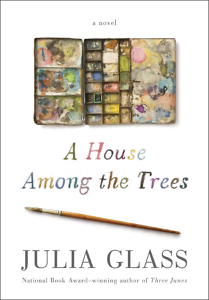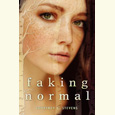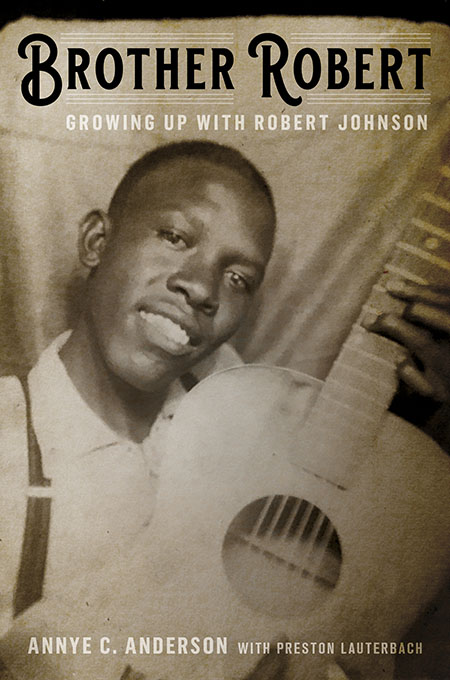The Artist’s Will
In Julia Glass’s A House Among the Trees, an author leaves a will that creates havoc
As a child, I spent hours staring at the illustrations in Maurice Sendak’s Outside Over There, particularly one image of the protagonist, Ida, playing her horn by the window, while goblins kidnap her baby sister. I was thrilled by the absence of adults, the presence of danger, the girl who lost herself in making art. Yet for all the time I spent with that image, I never thought for an instant about who Maurice Sendak actually was. All I cared about were his characters and the pictures on the page.

What happens to the people who can’t help but think of the artist behind the art, the adults whose futures and careers are tied up with an author’s life and death? In her novel A House Among the Trees, Julia Glass looks at the way the death of a famous children’s-book author, Mort Lear, affects the three adults left to deal with the aftermath of his life and fame.
While Lear is at times Sendak-like, A House Among the Trees is in no way a veiled “biopic” of an actual children’s-book author. Lear is very much his own character—and, besides, the novel is concerned not so much with Lear’s life as with what his sudden absence does to the people around him. Like Three Junes, Glass’s award-winning debut novel, A House Among the Trees includes multiple points of view, but (unlike Three Junes) they are not delivered in separate sections of the book. This omniscient narrator sometimes switches perspectives within a single scene.
The novel’s three perspectives reveal a common thread of need and anxiety in the protagonists. Eventually all three come together at Lear’s house in Connecticut with distinct agendas, each ready to make their own claims to the man and his life and his work. There’s Nick, a British actor new to his own rising fame, set to play Lear in a movie about the artist’s life. There’s Meredith, the recently divorced museum curator who feels betrayed by Lear’s decision not to leave his drawings to the collection she is organizing. Finally, there’s Tommy, who has devoted her entire adult life to being Lear’s caretaker and who has inherited Lear’s fortune. In her sophomore year of high school, Tommy “started a club she called Plays for Non-Actors, where students who didn’t want to be one of the show-offy theater kids could read plays aloud together.” She is relieved that in the film of Morty’s life, “they have made her, Tommy, a minor character at best.”
While the characters’ concerns about what Morty Lear has—or has not—left them, coupled with Lear’s Shakespearean name, suggest that A House Among the Trees could veer into a theatrical twist of crisis, Glass resists such a route. “Morty used to talk about how too much drama can crack the beams of a plot,” Tommy says to Nick. Similarly, Glass mostly keeps the drama between characters contained.
 The novel’s dramatic points arrive instead in Glass’s gorgeous verbal renderings of Morty’s art. A generous amount of story-space is given over to a description of Morty’s breakthrough book, Colorquake, and especially to an image of the book’s boy-hero, Ivo, “standing in the forest clearing, barefoot, his clothing in tatters, his eyes closed. He stands with his arms stretched out to either side, and from every direction, birds, butterflies, and insects alight on his body as if he were a tree, while squirrels and moles convene at his feet.” The fantastical moments in Morty’s work breathe an element of the fantastical, too, into A House Among the Trees. These detailed descriptions are the closest we as readers—as well as Tommy, Merry, and Nick—come to inhabiting Morty’s mind.
The novel’s dramatic points arrive instead in Glass’s gorgeous verbal renderings of Morty’s art. A generous amount of story-space is given over to a description of Morty’s breakthrough book, Colorquake, and especially to an image of the book’s boy-hero, Ivo, “standing in the forest clearing, barefoot, his clothing in tatters, his eyes closed. He stands with his arms stretched out to either side, and from every direction, birds, butterflies, and insects alight on his body as if he were a tree, while squirrels and moles convene at his feet.” The fantastical moments in Morty’s work breathe an element of the fantastical, too, into A House Among the Trees. These detailed descriptions are the closest we as readers—as well as Tommy, Merry, and Nick—come to inhabiting Morty’s mind.
There’s a poignancy in Glass’s decision to keep Morty at a narrative distance. His fame as an artist, and his art itself, has left him isolated: “He was trapped between solitude and celebrity,” Glass writes. The perspectives the novel gives and does not give the reader only emphasize this entrapment—even the reader doesn’t have access to Morty’s mind. Yet Glass gives us secondhand access to his art, which is, in many ways, better. “Morty’s books are filled with boys out in the world on their own, some by choice, others by chance,” she writes. “And when they’re not alone in the world, they’re often alone in the sanctuary of their imagination.”
Glass respects this solitude even as she explores the way the sanctuary of the imagination is simultaneously a safe space and a trap, not just for Morty Lear but also for the characters in the novel, who imagine their own futures through their perception of his life and his desires. Kids should care more about the characters in a book than they care about the author, but Glass’s novel makes space for adult readers to try to understand a particular author’s life, though never at the expense of her own characters, who anxiously seek a clearer understanding of their own.

Lee Conell’s fiction has appeared in places like Kenyon Review, Guernica, Glimmer Train, and American Short Fiction. She earned her M.F.A. at Vanderbilt University, and her debut story collection, Subcortical, will be published in November 2017 by the Johns Hopkins University Press. She lives in Nashville.


